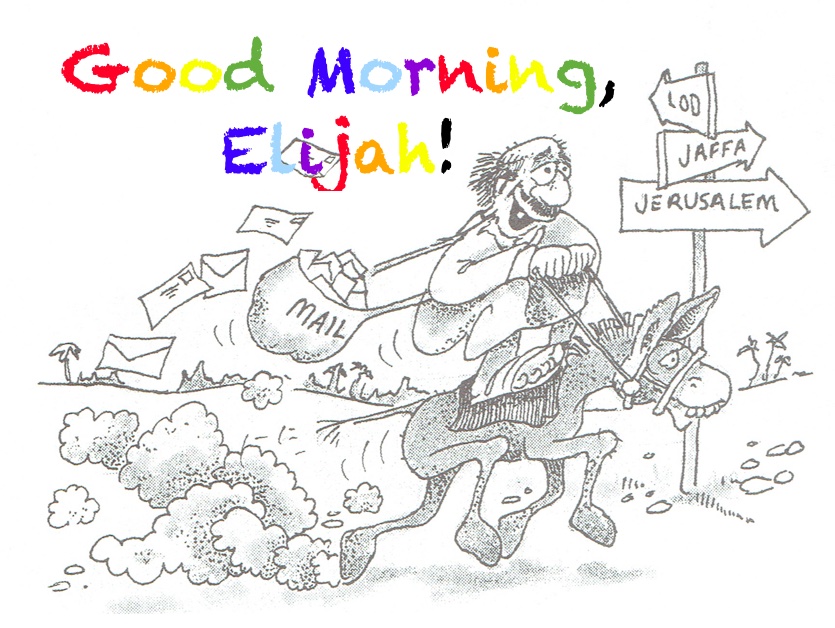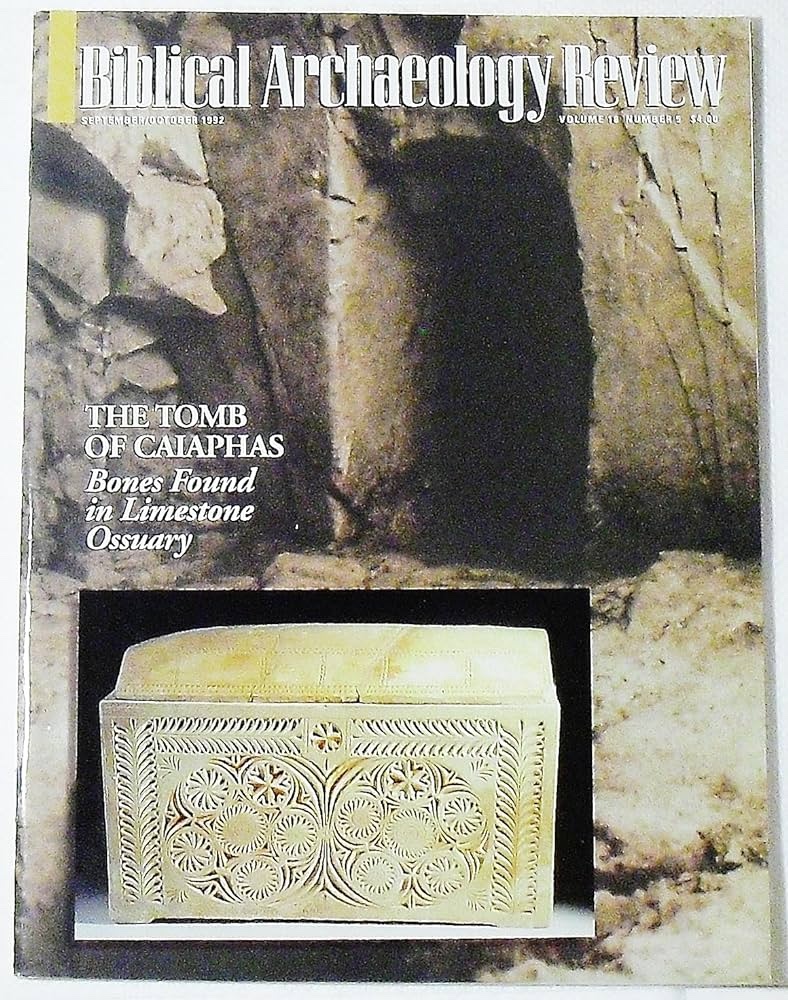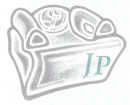In Israel, when someone finally realizes something that everyone else already knows, people say to the latecomer, בֹּקֶר טוֹב אֵלִיָּהוּ (BO⋅ker ṭōv ’ē⋅li⋅YĀ⋅hū, “Good morning, Elijah!”). In other words, “Where have you been?”
There is an alternate Hebrew expression. Israelis speak of someone “discovering America” when a person discovers information that has been known to others for a long time. They say, “So and so גִּלָּה אֶת אֲמֶרִיקָה (gi⋅LĀH ’et ’a⋅ME⋅ri⋅qāh, ‘discovered America’).”
Last August, as a result of two articles in Biblical Archaeology Review (usually referred to as BAR), the news media in the United States finally discovered the tomb and bones of the Caiaphas family. THe story made the front page of the New York Times and other newspapers across the United States. However, this important archaeological find had already been published ten months earlier by Jerusalem Perspective (JP). We devoted an entire double issues (July/October 1991) to the Caiaphas find, and subsequently the story was widely covered by major newspapers, magazines and radio and television networks in Israel and Europe. Jerusalem Report, the Israeli equivalent of Newsweek, carried an article about the find (with cover headline) in its December 19, 1991 issue. The official publication of the find by the Israel Antiquities Authority (Atiqot XXI, pp. 63-87) also preceded BAR by two months.
However, it was only in August 1992 that America “discovered America.” We think it is appropriate to say to America, “Good morning, Elijah!”
Mira Avrech, the well-known columnist for Israel’s largest daily newspaper, Yediot Aharonot, and a correspondent for the U.S. magazine People, was so intrigued by America’s belated “discovery” of the bones of Caiaphas that she made it the subject of her August 20, 1992 column in Yediot Aharonot (accompanied by a photograph of David Bivin).
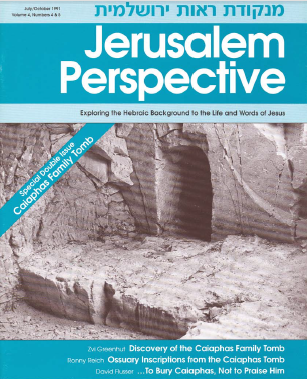
The Caiaphas tomb episode demonstrates that archaeological discoveries in Israel are not considered significant by the U.S. news media until BAR reports them. This is a tribute to BAR magazine. Its editors have produced an outstanding publication that deserves the confidence of the media. Although the Jerusalem Perspective issue devoted to the Caiaphas find was not mentioned by BAR, JP was privileged to be credited twice by BAR (pp. 40, 44) for illustrations used in BAR’s Caiaphas issue. While BAR did its usual excellent job reporting the Caiaphas tomb find, there was one important defect in its coverage. In the JP, Atiqot and BAR issues, there were articles by Zvi Greenhut, the archaeologist who excavated the Caiaphas tomb, and Ronny Reich, the archaeologist and epigrapher who deciphered the inscriptions on the walls of the ossuaries. (There were no inscriptions on the walls of the tomb as erroneously reported by BAR.) However, in JP and Atiqot, but not in BAR, there was a third article which discussed the significance of Caiaphas and his role in the death of Jesus as portrayed in the New Testament. This article—the most significant for Christian readers—was written by Jerusalem School scholar and Hebrew University specialist on early Christianity, Prof. David Flusser. (Flusser’s JP article was entitled “…To Bury Caiaphas, Not to Praise Him.”)
JP subscribers expect us to be quick and accurate in bringing them the latest research from Israel. As we stated on the introduction to the JP Caiaphas issue, “One of the advantages of living in Israel and publishing our magazine here is that we are on the scene to bring you the latest discoveries in fields that relate to the life and words of Jesus.” This advantage was never better illustrated than in the U.S. news media’s coverage of the Caiaphas tomb discovery.
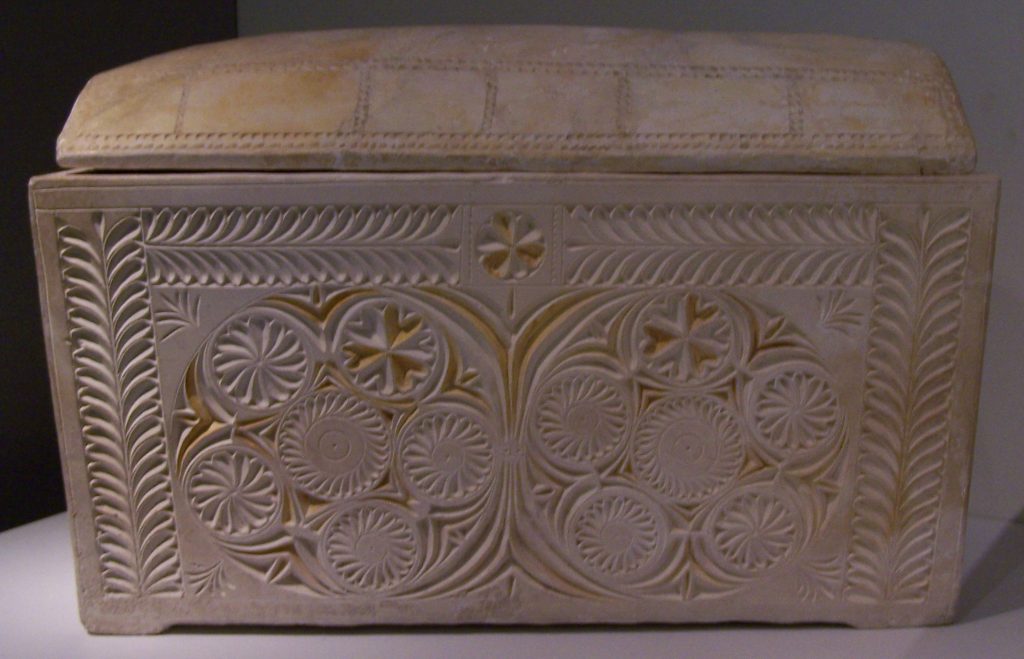
Postscript
The Yehosef bar Caiapha ossuary is now on display in the Israel Museum in Jerusalem. Subscribers to JP’s premium content can access updated online versions of all the articles that appeared in Jerusalem Perspective’s issue on the discovery of Caiaphas tomb. These include:
- David N. Bivin, “Perspective on the Caiaphas Tomb”
- Zvi Greenhut, “Discovery of the Caiaphas Family Tomb”
- Ronny Reich, “Ossuary Inscriptions from the Caiaphas Tomb”
- David Flusser, “…To Bury Caiaphas, Not to Praise Him.”

